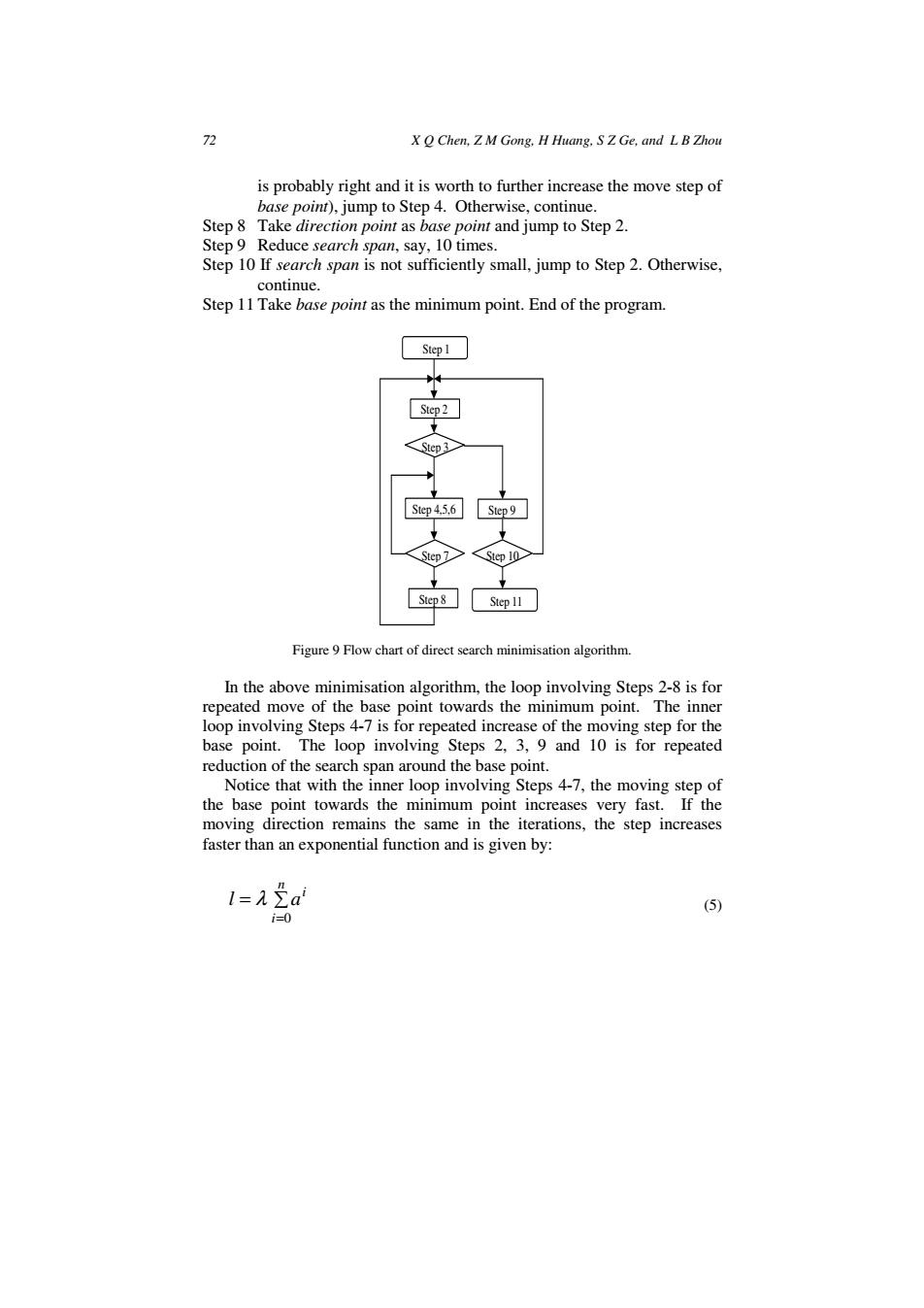正在加载图片...

72 X O Chen,Z M Gong,H Huang.S Z Ge,and L B Zhou is probably right and it is worth to further increase the move step of base point),jump to Step 4.Otherwise,continue. Step 8 Take direction point as base point and jump to Step 2. Step 9 Reduce search span,say,10 times. Step 10 If search span is not sufficiently small,jump to Step 2.Otherwise, continue. Step 11 Take base point as the minimum point.End of the program. Step2 Step 3 Step 4.5.6 Step9 Step Z Step 10 Step8 Step 11 Figure 9 Flow chart of direct search minimisation algorithm. In the above minimisation algorithm,the loop involving Steps 2-8 is for repeated move of the base point towards the minimum point.The inner loop involving Steps 4-7 is for repeated increase of the moving step for the base point.The loop involving Steps 2,3,9 and 10 is for repeated reduction of the search span around the base point. Notice that with the inner loop involving Steps 4-7,the moving step of the base point towards the minimum point increases very fast.If the moving direction remains the same in the iterations,the step increases faster than an exponential function and is given by: 1=2a (5) =072 X Q Chen, Z M Gong, H Huang, S Z Ge, and L B Zhou is probably right and it is worth to further increase the move step of base point), jump to Step 4. Otherwise, continue. Step 8 Take direction point as base point and jump to Step 2. Step 9 Reduce search span, say, 10 times. Step 10 If search span is not sufficiently small, jump to Step 2. Otherwise, continue. Step 11 Take base point as the minimum point. End of the program. Step 3 Step 9 Step 8 Step 2 Step 4,5,6 Step 7 Step 10 Step 1 Step 11 Figure 9 Flow chart of direct search minimisation algorithm. In the above minimisation algorithm, the loop involving Steps 2-8 is for repeated move of the base point towards the minimum point. The inner loop involving Steps 4-7 is for repeated increase of the moving step for the base point. The loop involving Steps 2, 3, 9 and 10 is for repeated reduction of the search span around the base point. Notice that with the inner loop involving Steps 4-7, the moving step of the base point towards the minimum point increases very fast. If the moving direction remains the same in the iterations, the step increases faster than an exponential function and is given by: = ∑ = n i i l a 0 λ (5)